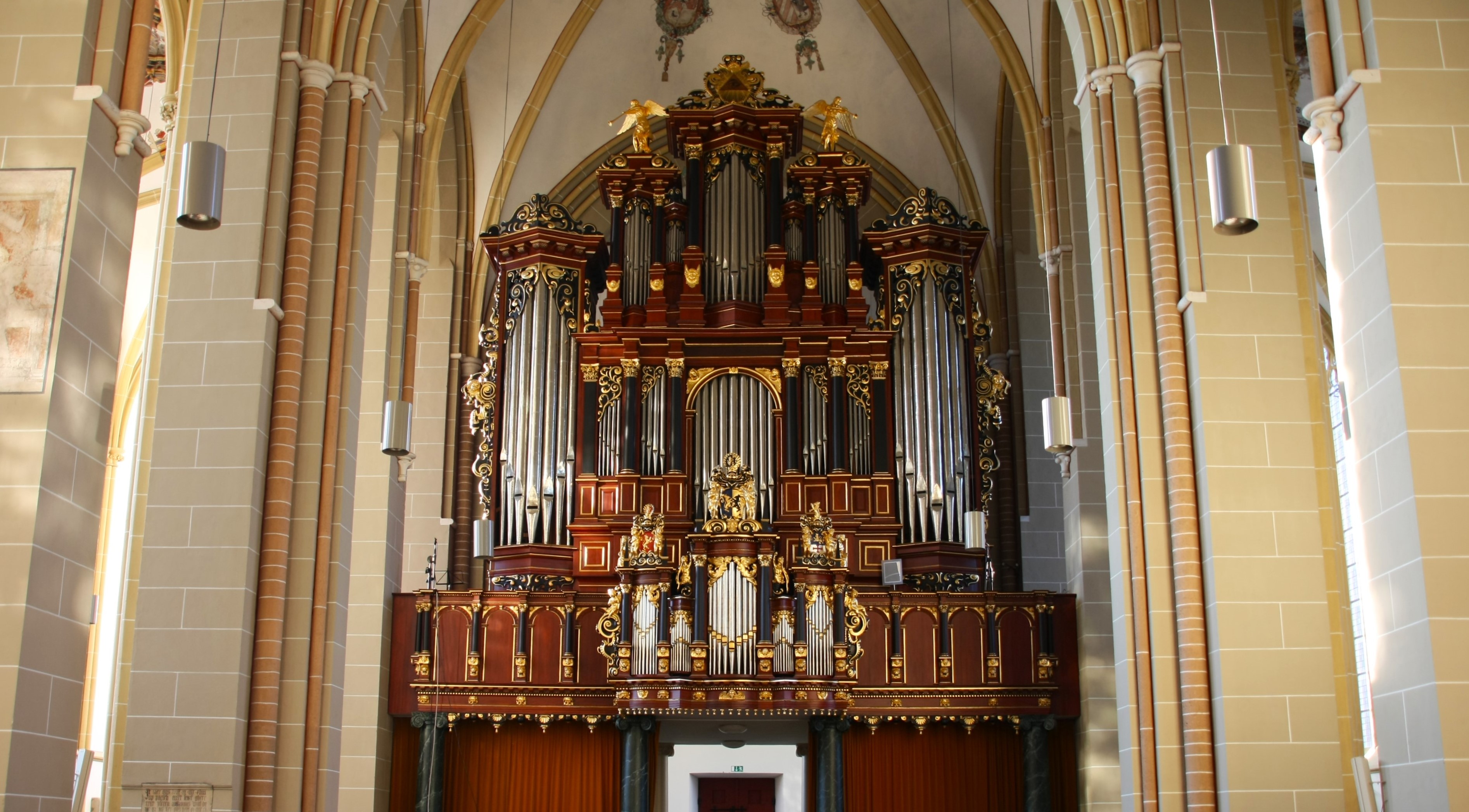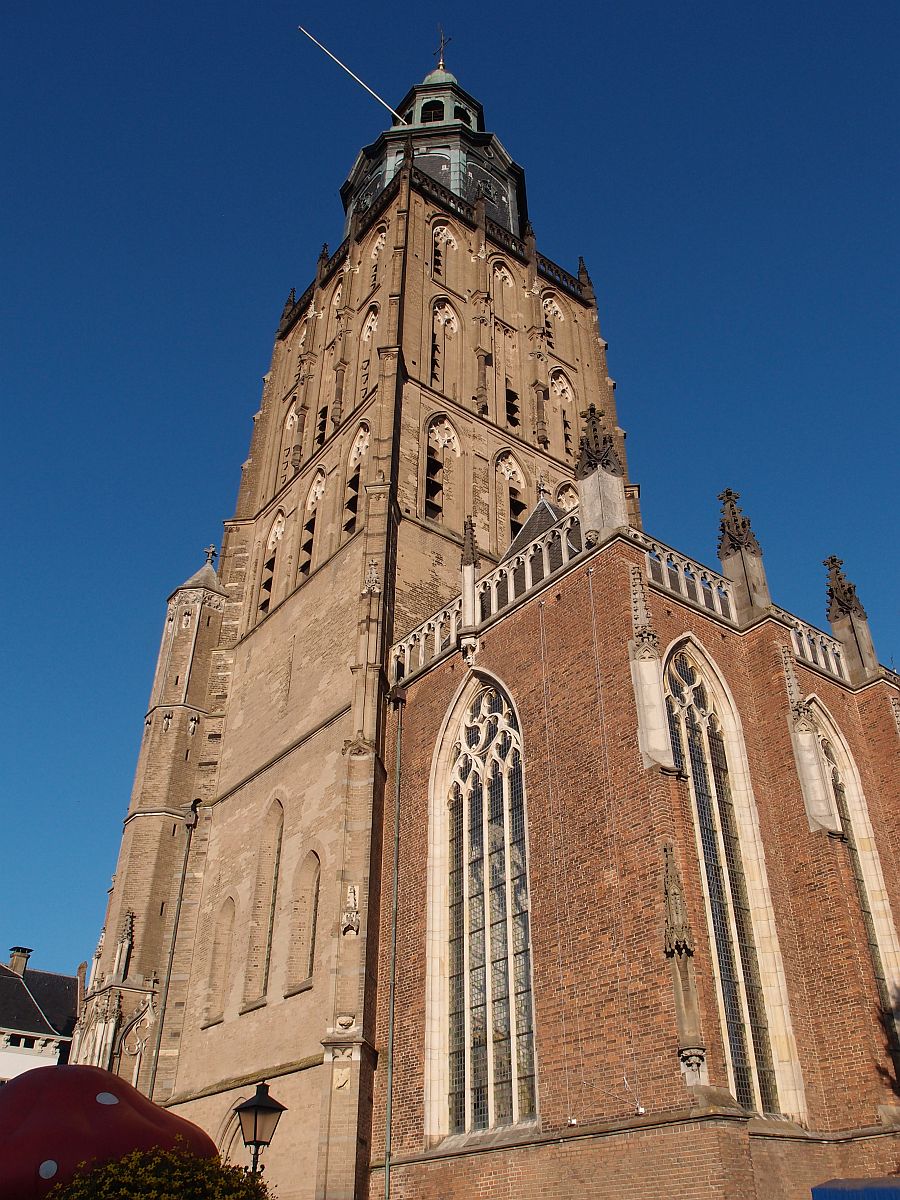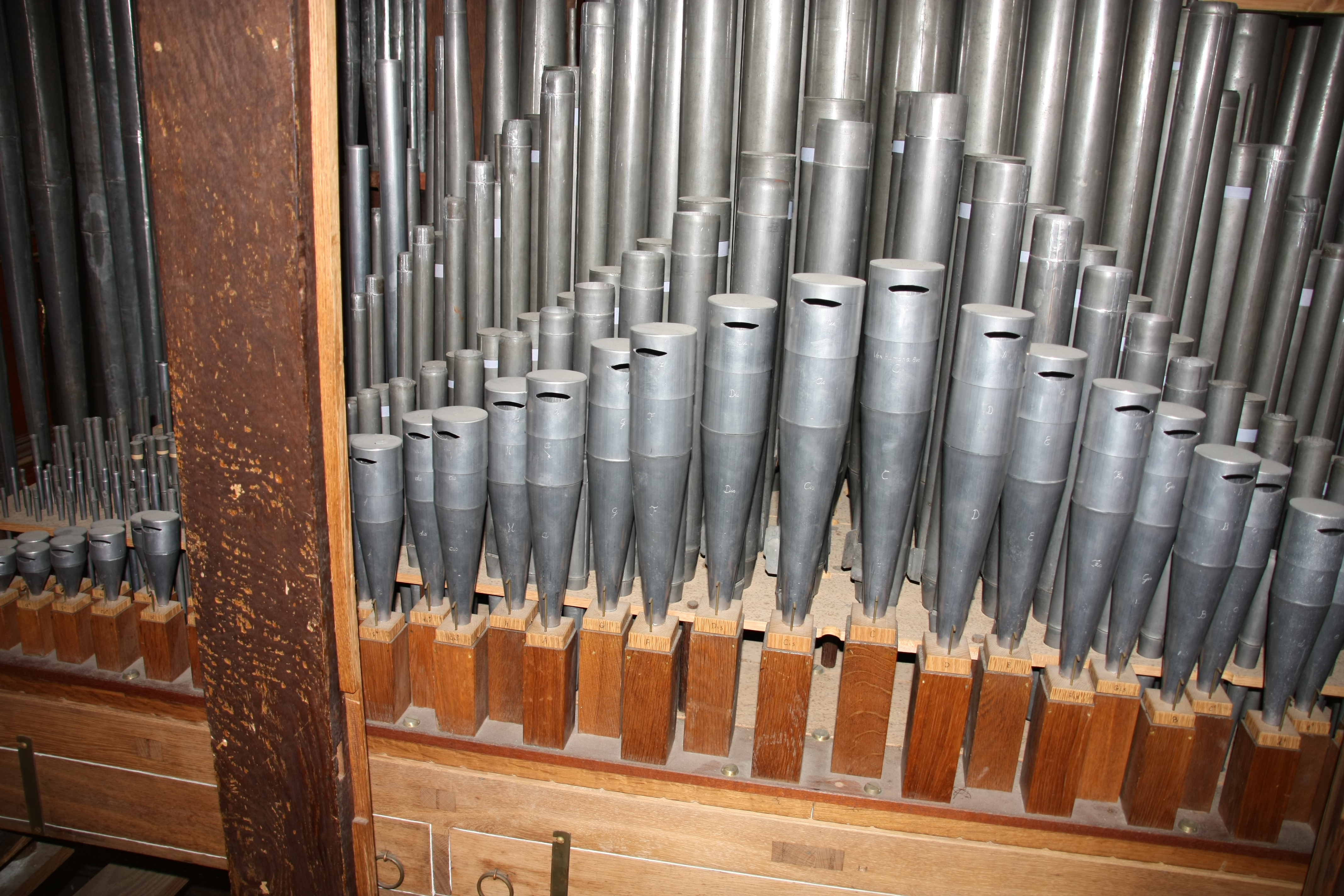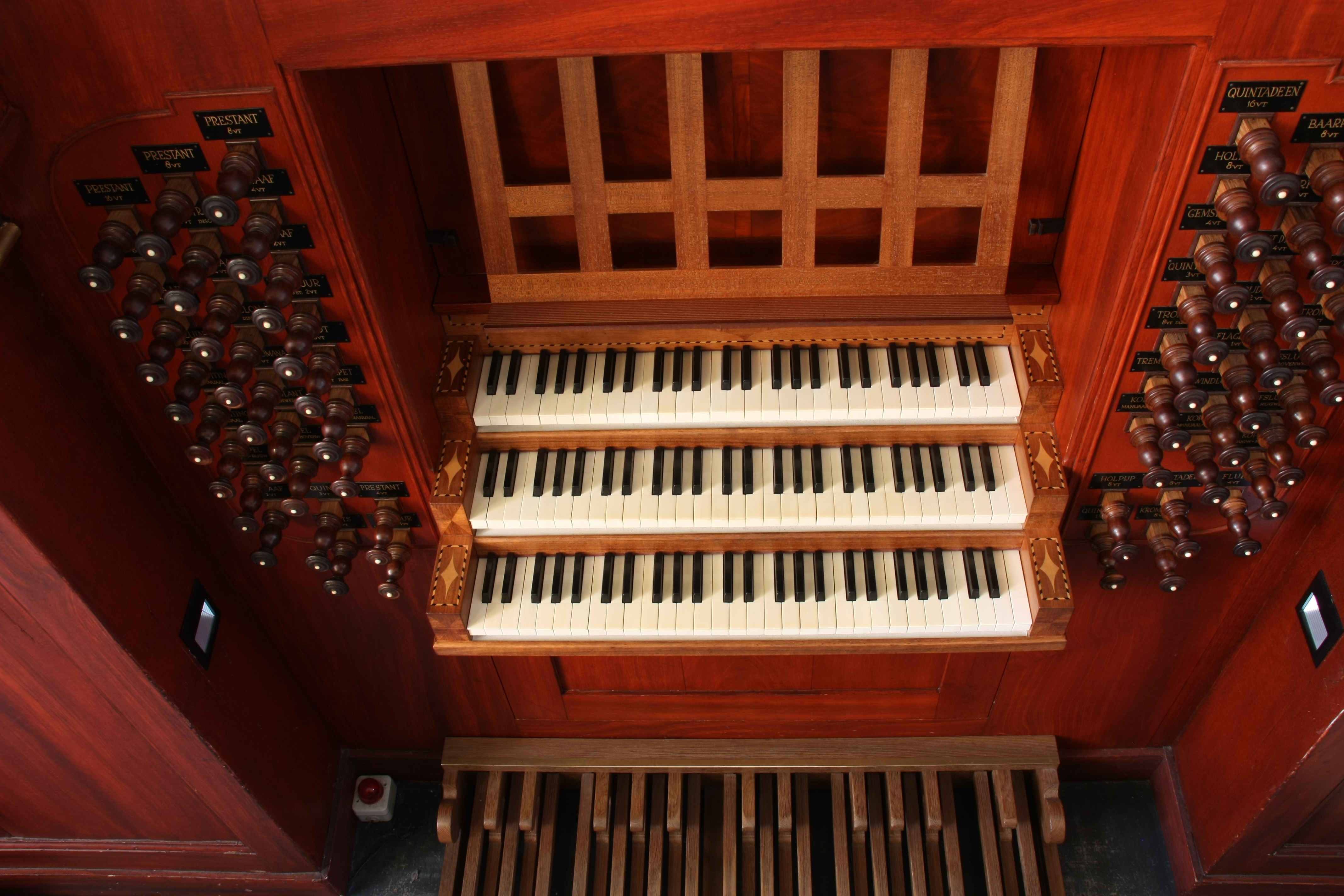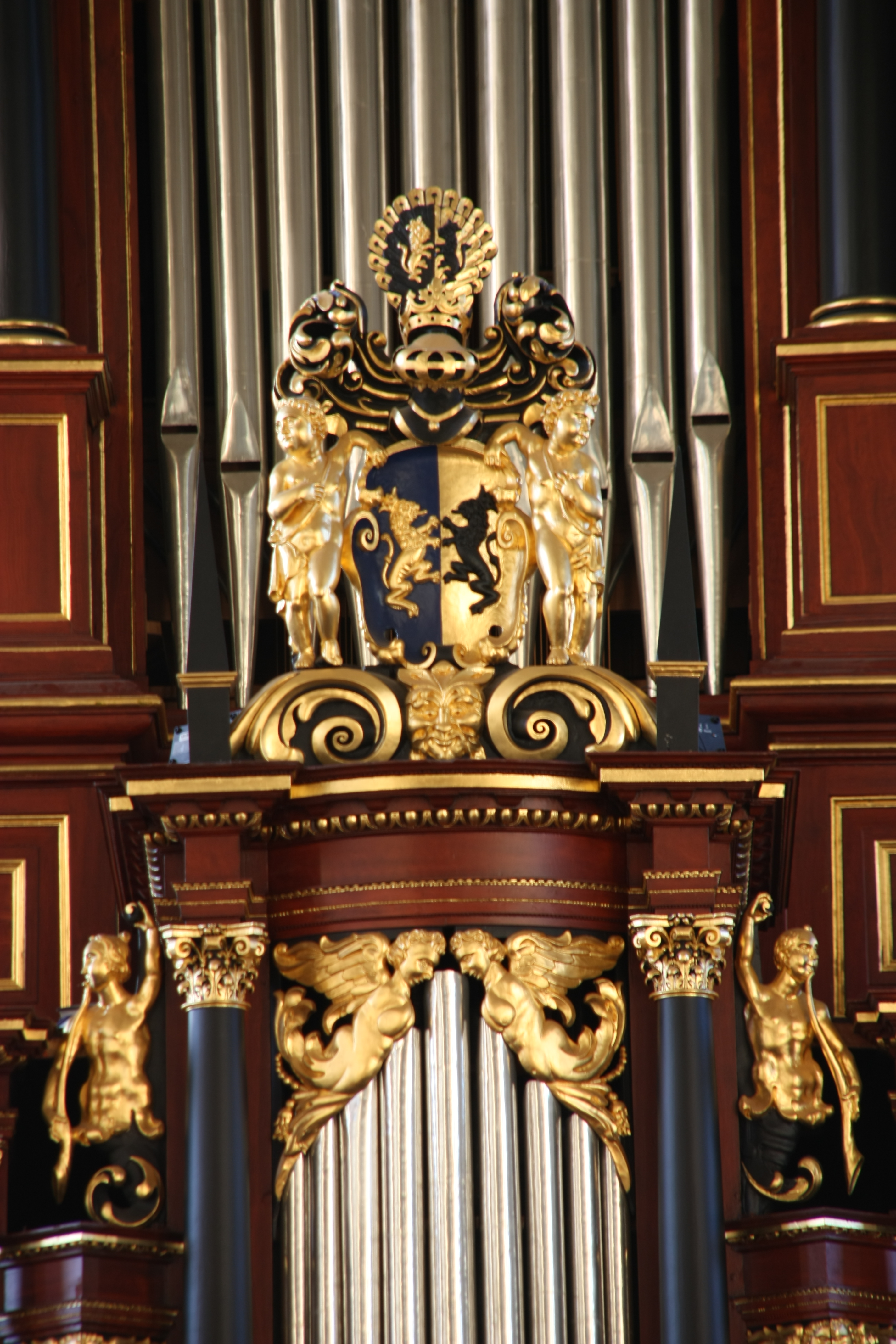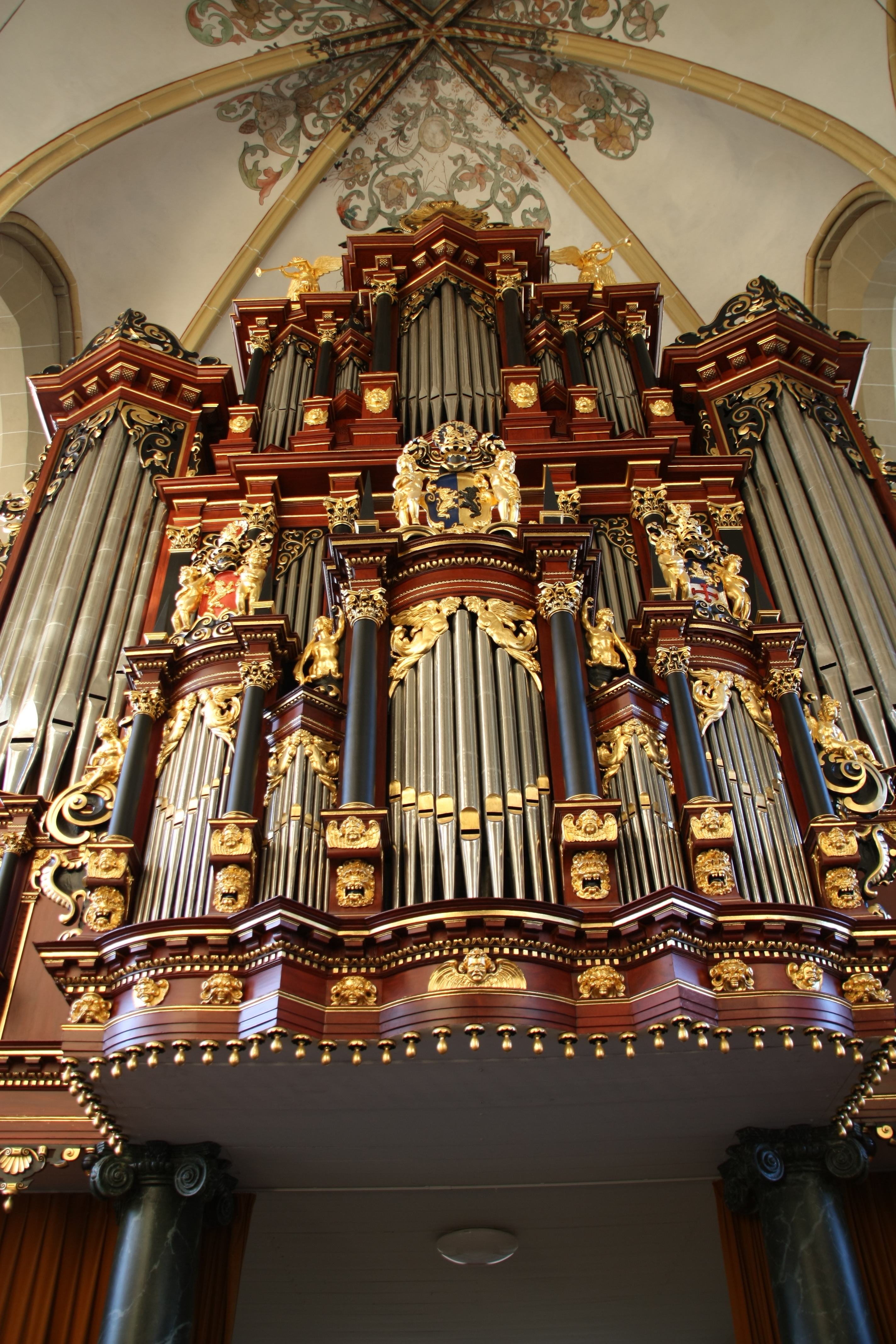Zutphen, Sint Walburgiskerk
| Builder | H. H. Bader |
|---|---|
| Year | ca. 1643 |
| Period/Style | Baroque |
| Stops | 38 |
| Keyboards | 3+P |
| Keyaction | tracker/mechanical |
| Tuning | 1/6 Comma Meantone at 443 Hz |
| Sampleset |
Available
 , sampled by
Sonus Paradisi
, sampled by
Sonus Paradisi
|
The church of St. Walburga (Walburgiskerk) is a large gothic cathedral. The reverb time is enormous, ca. 8 seconds long. We spotted even up to 9 seconds on some tones. The church houses three pipe organs. The most important of them is the historical instrument of Hans Henrich Bader (died ca. 1680). The organ was constructed between 1637-1643 and it was placed on the northern side of the church at that time. First, Bader was commissioned to add a Rugwerk to an existing older organ, later he added a new Hoofdwerk and a Pedal. The independent Pedal was a distinctive and innovative feature of the Westphalian organbuilding tradition Bader represented, since Dutch organs of the first half of 17th century lacked the Pedal division.
Later, in 1813-1815, the organ was substantially rebuilt, enlarged and moved to the organ loft by J. W. Timpe. He added the third manual - the Bovenwerk. In 1906, the organ was moved again by G. Spit and J. C. Sanders to the western wall of the church. Also, the reeds were renewed at that time. The organ was damaged by fire in 1948.
A comprehensive restoration of the organ took place between 1993 and 1996 by Orgelmakerij Reil to the state of 1815 with some optimizations. The Bader concept is still clearly present in the Hoofdwerk, Rugwerk and the Pedal. New baroque-type reeds were supplied. The Bovenwerk was brought back to the shape of Timpe.
The wind is supplied by 5 wedge bellows, four of which date back to 1643. The organ is tuned in 1/6 comma meantone.
The organ belongs to the most notable organs of Netherlands and it is the finest surviving example of a Bader organ.
Later, in 1813-1815, the organ was substantially rebuilt, enlarged and moved to the organ loft by J. W. Timpe. He added the third manual - the Bovenwerk. In 1906, the organ was moved again by G. Spit and J. C. Sanders to the western wall of the church. Also, the reeds were renewed at that time. The organ was damaged by fire in 1948.
A comprehensive restoration of the organ took place between 1993 and 1996 by Orgelmakerij Reil to the state of 1815 with some optimizations. The Bader concept is still clearly present in the Hoofdwerk, Rugwerk and the Pedal. New baroque-type reeds were supplied. The Bovenwerk was brought back to the shape of Timpe.
The wind is supplied by 5 wedge bellows, four of which date back to 1643. The organ is tuned in 1/6 comma meantone.
The organ belongs to the most notable organs of Netherlands and it is the finest surviving example of a Bader organ.
| Rugwerk | Hoofdwerk | Bovenwerk | Pedaal |
|---|---|---|---|
| Holpijp 8′ | Quintadeen 16′ | Prestant 8′ | Prestant 16′ |
| Quintadeen 8′ | Prestant 8′ | Baarpijp 8′ | Subbas 16′ |
| Prestant 4′ | Holpijp 8′ | Fluit Travers 8′ | Octaaf 8′ |
| Fluit 4′ | Octaaf 4′ | Roerfluit 8′ | Gedekt 8′ |
| Quint 3′ | Gemshoorn 4′ | Octaaf 4′ | Octaaf 4′ |
| Octaaf 2′ | Quintfluit 3′ | Fluit d′Amour 4′ | Bazuin 16′ |
| Quintfluit 1 1/3′ | Octaaf 2′ | Woudfluit 2′ | Trompet 8′ |
| Terts 1 3/5′ | Mixtuur 4-6x 2′ | Flageolet 1′ | Trompet 4′ |
| Mixtur 4-5x 1′ | Trompet (bass) 8′ | Carillon 3x 4′ | |
| Trompet (desc.) 8′ | Vox Humana 8′ | ||
| Fagot 16′ |
1667842415-Bo hm Jesu du bist allzu scho ne
0:00
0:00
1653744916-J. Chr. H. Rinck Fantasia Patetica Op. 55 5 No. 7
0:00
0:00
1479677058-Praeludium in e-Moll
0:00
0:00
1667843098-Christian Ritter Sonatina
0:00
0:00
https://www.sonusparadisi.cz/en/organs/netherlands/zutphen-virtual-organ-model.html
 Pipe Organ Map
Pipe Organ Map